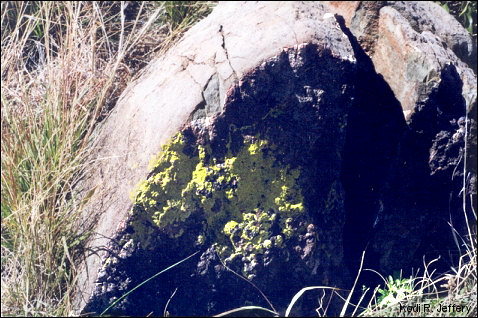

When we talk of an organism, we often mean a single individual—Tom or Nellie or that toadstool over there. But sometimes, it's hard to define an individual. Many people are aware that lichens are made up of intertwined fungi and algae or blue-green bacteria. Fewer people are aware that the definition can be much murkier than that.
Slime molds are a case in point, where cells may forage independently but come together to form a single individual for reproduction. Some types of organisms incorporate complete individuals of other kinds into their cells—many corals, for example.
Perhaps the most startling to people, however, is the concept that we,
ourselves, are a chimera—that in the far distant past, our ancestors incorporated
bacteria into our cells that became part of us—the mitochondria that provide the energy
to our cells. Plants have gone even further, adding photosynthetic bacteria in the dim
past; bacteria that eventually evolved into the green, photosynthesizing units of
plants, the chloroplasts. So just what is an individual?

Listen to the Audio (mp3 format) as recorded by KTEP, Public Radio for the Southwest.
Contributor: Arthur H. Harris, Laboratory for Environmental Biology, University of Texas at El Paso.
Desert Diary is a joint production of the Centennial Museum and KTEP National Public Radio at the University of Texas at El Paso.

Lichens growing on a boulder. These organisms are a mixture of organisms from two different kingdoms. Photograph by Kodi R. Jeffery.
Purves, W. K., G. H. Orians, H. C. Heller, and D. Sadava. 1998. Life, the science of biology. 5th ed., Sinauer Associates, Inc., 1243 pp.